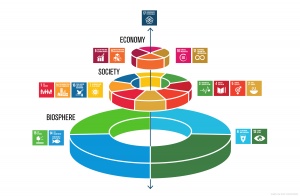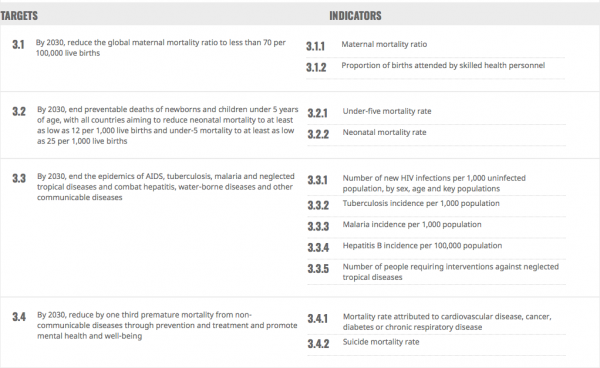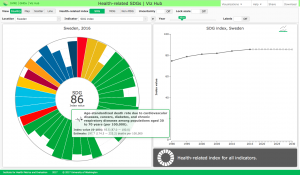Sustainable Development Goals
Original Editor - Clara Hildt.
Lead Editors
Definition[edit | edit source]
The 17 Sustainable Development Goals (SDGs), also known as the Global Goals, are part of the 2030 Agenda for Sustainable Development[1].
Ongoing from its implementation in 2015, the goals universally aim to “mobilize efforts to end all forms of poverty, fight inequalities and tackle climate change, while ensuring that no one is left behind”[1].
Development of the Goals[edit | edit source]
The concept of sustainability was first defined in the Brundtland Comission’s report Our common future in 1987.
It presented a new concept of development, a “Global Agenda for Change”, which should “ensure that it meets the needs of the present without compromising the ability of future generations to meet their own needs”[2]. It became a very successful approach, internationally influencing economic, social and environmental issues[3].
The latest outcome is the 2030 Agenda for Sustainable Development, which was developed after the Rio+20 Conference in 2012 and adopted by world leaders at an UN summit in September 2015 (New York)[1][4].
The Millennium Development Goals were a predecessor of the SDGs[5]. However, the SDG go further than the Millennium Development Goals did before, and target not only low-income countries but all countries[1].
Presentation of the Goals[edit | edit source]
Key elements of sustainable development are economic growth, social inclusion and environmental protection, all of which are addressed by the 17 SDGs and are interconnected with each other[1].
The global indicator framework includes specific targets and indicators for each goal.
As an example, see an extract from SDG 3, “Ensure healthy lives and promote well-being for all ages”[6].
For further information visit https://sustainabledevelopment.un.org.
Monitoring Progress[edit | edit source]
The SDGs and its 169 targets are not legally binding.
It is the responsibility of each country to fulfil the agenda, and to collect data for follow-up and review.
Progress is monitored by a set of global indicators[1]. The Institute for Health Metrics and Evaluation offers a tool to visualize the progress towards achieving health related SDGs, which is here demonstrated at the example of Sweden:
http://www.healthdata.org/data-visualization/health-related-sdgs
References:
- ↑ 1.0 1.1 1.2 1.3 1.4 1.5 United Nations. The Sustainable Development Agenda. 2017 [cited 2017 07.12.]; Available from: http://www.un.org/sustainabledevelopment/development-agenda/.
- ↑ World Commision on Environmnet and Development, Our Common Future. 1987.
- ↑ United Nations Economic Commission for Europe. Sustainable Development - concept and action. 2017 [cited 2017 07.12.]; Available from: http://www.unece.org/oes/nutshell/2004-2005/focus_sustainable_development.html. .
- ↑ United Nations. United Nations Sustainable Development Summit 2015. 2017 [cited 2017 07.12.]; Available from: https://sustainabledevelopment.un.org/post2015/summit.
- ↑ United Nations. Sustainable Development. 2017 [cited 2017 07.12.]; Available from: https://sustainabledevelopment.un.org/resourcelibrary.
- ↑ United Nations. Sustainable Development Goal 3. 2017 [cited 2017 09.12.]; Available from: https://sustainabledevelopment.un.org/sdg3.










